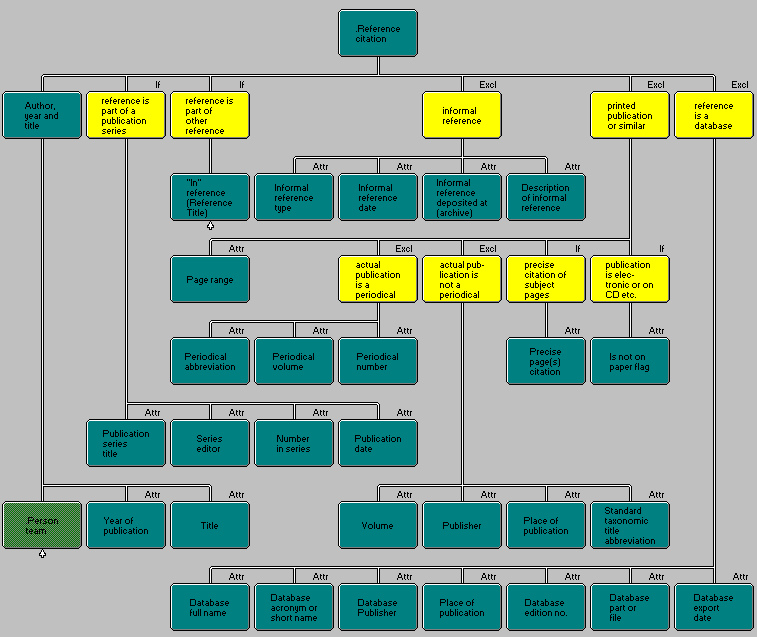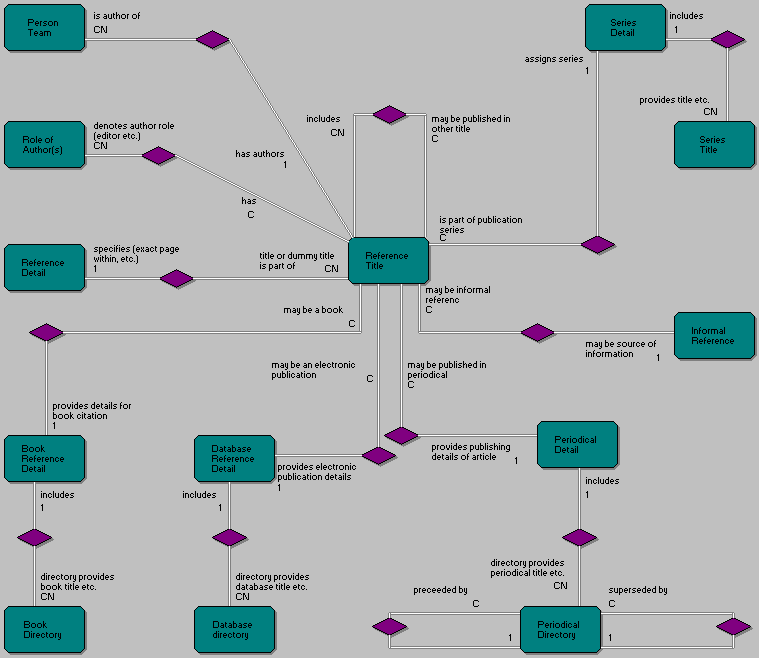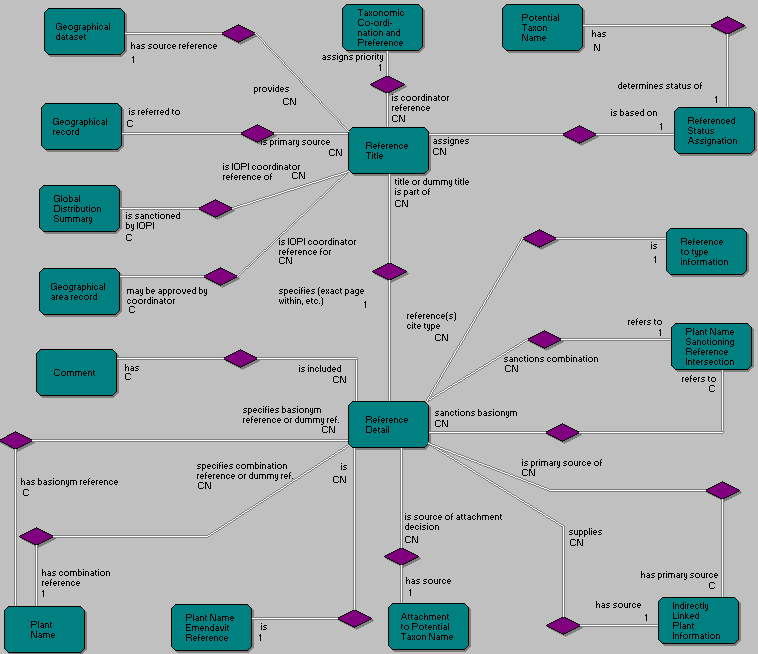7. Reference citations
Non-standard features of taxonomic source references
Bibliographical data form the second centerpiece of the IOPI model.
A well structured, highly atomized structure is needed to provide
for the different necessities of scientists and users. All information
about plants, plant names, status assignment, classification,
etc. in the model is tied directly or indirectly to its source
by means of reference citations.
Library systems and programs managing scientific literature citations
abound, much of the structural elements found in the model are
also found in these programs. However, in the context of a taxonomic
data model, several special requirements have to be met:
- Inclusion of standard abbreviations used in taxonomic short
citations. Fortunately, a broad consensus exists among botanists
to use the following standards adopted by the IUBS Commission
for Plant Taxonomic Databases (TDWG): Authors of Plant Names (Brummitt
& Powell, 1992); Periodicals (BPH, Botanico-Periodicum-Huntianum,
Lawrence & al., 1968, 1991), and, for book title abbreviations,
Stafleu & Cowan's Taxonomic Literature ed. 2 and supplements..
- Inclusion of databases as source reference. In contrast to
printed information, standards for the citation and data elements
of database citations have yet to evolve. As databases may change
continually in time, the date of data export is an important new
attribute. Some commercially available databases produce 'editions',
which may be distributed on CD-ROM.
- Inclusion of unpublished source references. Taxonomic information
may be derived from a wide variety of unpublished sources, such
as herbarium sheets, unpublished thesis, personal comments, etc.
Some of these, such as manuscripts and thesis' are actually covered
by the attributes provided for printed publications and can be
treated as such, with the addition of an „unpublished"
flag to clarify their status. Others, such as information from
herbarium labels or notes taken of personal comments require a
specific category, the „Informal Reference". Informal
references should be accessible, so an attribute was included
to name the place where the reference is deposited.
- For taxonomic citations, an exact page citation within a title
must be possible to refer to the page on which the diagnosis of
the taxon is found.
Program developers should take care to provide tools or routines
for the import of data form standard library formats, from widely
distributed citation managing programs and from available reference
libraries.

Diagram 15: Data structure of reference citations
(Note: Some attributes, such as further details of periodicals
and precise citations, have been omitted in this diagram. Please
refer to the list of entities and attributes provided in chapter 11.)
Entity Relation model of reference citations

Diagram 16: Entity-Relation model of reference citations
To illustrate the central role of reference citations in the model,
Diagram 17 provides a view detailing the context in which reference
citations are used.

Diagram 17: Context model of references
Next chapter; Contents
of this article; Complete entity list;
References cited; Author
information. Last updated: June 23, 1995



